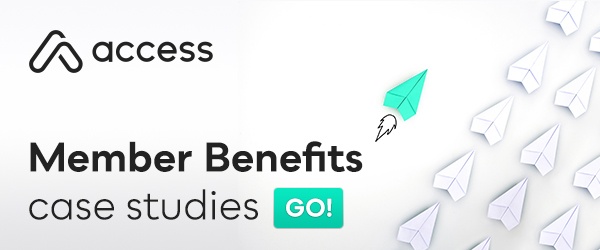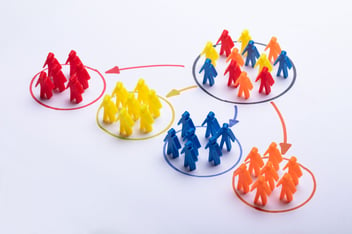What is Onboarding? The Critical Next Step in Your Loyalty Program
Congratulations! You’ve attracted yourself a new member and you’re bound to be best friends forever, right?
The reality, unfortunately, is that most members won’t stick with you beyond the first week, and even more will disappear by the end of a month.
Those who stick around for the long haul are your loyal members and your best source of income.
But first you have to get them to stay.
New members are notoriously quick to abandon loyalty programs when they don’t see immediate value. They delete apps, leave points unredeemed, fail to continue a free trial and basically forget you exist. This happens when people don’t immediately see the value of membership.
While you know your product or service intimately, new members seeing it for the first time can have vastly different reactions to it. You hope they are delighted by your offering, but the amount of new information can cause many to experience confusion, boredom, frustration or any number of emotions that are more likely to make them wander away than fall in love.
These first impressions follow the member through their entire journey with you – and often dictate whether that journey lasts a few days, or a lifetime.
Luckily, you have a way to control that first impression and make sure it’s a good one. In the business world, it’s called onboarding.
What is the Definition of Member Onboarding?
 The official Merriam-Webster definition of onboarding is “the act or process of familiarizing a new customer with one’s product or services."
The official Merriam-Webster definition of onboarding is “the act or process of familiarizing a new customer with one’s product or services."
But some industry experts have defined it a bit more elegantly.
Growthzone calls it “the process through which new members move from being organizational outsiders to becoming organizational insiders.”
According to venture capitalist, David Skok, it is “getting to the WOW moment as soon as possible – the point where your buyer suddenly sees the benefit they get from using your product, and says to themselves ‘Wow! This is great!’”
Bryce Benson, senior director of client success and onboarding at Access Development, defines it as “vetting a customer’s goals with our product to make sure we’re helping them to be as successful as possible, in as little time as possible.”
However you say it, there are three critical elements of a good onboarding process.
- Clear Value: If members can’t see the value that your product or service holds for them, they won’t continue using it. While that value may seem obvious to you, members have more trouble sorting through all the new information to find the most important parts. And believe it or not, you’re probably not doing as good a job as you could in making sure that wow factor is the first thing they see.
- Immediacy: People are busy and have little patience for sorting through large amounts of information. You don’t have long to impress. In fact, it only takes 1/10 of a seconds for people form a lasting impression, one they tend to hold on to.
- Helpful Resources: The resources needed to help your members will be unique to your business but common ones include welcome emails, self-help product tours, tutorials, etc. And nothing beats the touch of one-on-one guidance through quality customer service.
Effective Onboarding Raises Retention
Onboarding begins the moment your new member commits to try your product or service. This could be a member joining your membership benefits program or a customer buying your product. It could be a client exploring your services or a member joining your loyalty points program. Whoever it may be, it’s someone who trusted in your promise enough to give you a try. Now it’s your job to deliver on that promise, establish trust, and give them an excellent reason to stay.
This is why many organizations work with Access. The best discount programs provide loyalty programs with a powerful way to provide instant value that is quick to explain to members.
But with many programs, it may not be as easy to win over your members as it sounds. To most members, your offering’s value isn’t self-explanatory. They won’t be impressed when you open the door to a maze and invite them to find their way through. By contrast, a good onboarding sequence will feel more like a VIP experience with personalized tour and insider secrets to success.
Implementing a proper onboarding sequence has a trickle-down effect. Even a small boost in percentage of customers who stick around past the first day can lead to a larger increase in overall retention down the road.
- A loyalty increase of 7% can boost lifetime profits per customer by as much as 85%, and a loyalty increase of 3% can correlate to a 10% cost reduction
- Building loyalty with 5% more customers would lead to an increased average profit per customer of between 25% and 100%
- Acquiring a new customer is at anywhere from 5 to 25 times more expensive than retaining existing ones, and increasing customer retention rates by just 5% increases profits by 25-95% (Narvar)
These are just a few of the many loyalty statistics that prove this to be true.
How does this work? Well, it’s true that some new members are simply not a good fit, and won’t stick around no matter what you do. But there are many others who are a great fit and just don’t know it yet. If you can catch those members before they churn out early, you improve your chances of retaining them for years and reaping all the benefits that come from earning their loyalty.
Retention is More Profitable than Acquisition
The Pareto principle states that 80% of your sales comes from 20% of your customers. That alone is enough reason for many brands and loyalty providers to prioritize retention over recruitment. But loyal, engaged members are worth more than just the monthly fee they pay or usage stats they boost. For instance:
- 75% of loyal customers will recommend a brand to friends and family
- “Fully engaged” customers (those with a strong attachment to the brand, or brand ambassadors) deliver a 23% premium over the average customer in share of wallet, profitability and revenue
- Engaged consumers buy 90% more frequently, spend 60% more per transaction and are five times more likely to indicate it is the only brand they would purchase in the future. All of these factors lead to engaged customers delivering three times the value to the brand over the course of a year
Companies invest so much in attracting new members, it would be such a shame to let that go to waste, especially when even small improvements can make a big difference.
Ready to Amp Up your Onboarding Process?
It’s clear the loyalty industry has room to improve. After all, only 21% of loyalty program members are prompted to use the program, and only 20% receive help to get the most out of their membership.
How do you compare?
Loyalty programs, member benefits programs and more would see a boost in retention and member excitement if they go back and work on this crucial step. Next week, we’ll discuss some tips and tricks on how to take your onboarding efforts to the next level. While you’re waiting, feel free to post any questions or comments you might have below.
Related articles:
- Loyalty Begins at the Beginning: The Importance of Great Onboarding
- The Bold Idea Every Company Interested In Customer Engagement Should Try This Year
- 10 Low Cost, Ninja Customer Engagement Tactics
Topics: Customer Engagement, partnership marketing, Discount Programs, Customer Success, loyalty programs, onboarding, Member Success

Written by: Kendra Lusty





.jpeg)







Share your Comment.